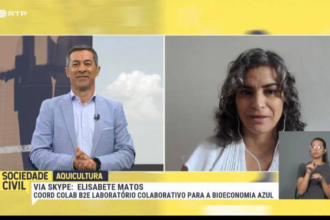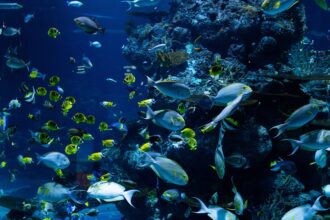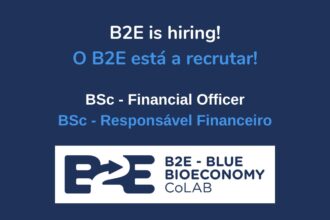B2E Technological Sonar Initiative #21
Sharpen your technological senses and dive into another edition of “B2E Technological Sonar Initiative”! Discover the latest findings and innovations that are transforming the marine industry. From the use of water fleas to mitigate eutrophication and provide nourishment to fish, to the creation of virtual twin fish farms driven by genetic models, there are new horizons to explore. Keep an eye out for the incredible octopus nursery discovered in Costa Rica. Additionally, immerse yourself in the world of mussels: a revolutionary genetic chip has been developed to identify their geographical origin. Marine biotechnology also brings advancements, such as the utilization of seaweed extracts to enhance cardiovascular health.
AQUACULTURE
Could water fleas remediate aquaculture effluent and provide fish nutrition?
New research from Denmark suggests that Daphnia magna – a species of water flea – may
have potential to reduce eutrophication in recirculating aquaculture systems, while also providing a suitable feed source for fish larvae. The team used a combined approach of using microalgae to bioremediate the recirculated water, and bio-harvesting of these algae by zooplankton to maximise resource recovery, with the zooplankton being a suitable live feed source, particularly for fish larvae. Although the use of microalgae to extract excess nutrients from RAS facilities is not a novel technique, the challenge of this approach lies in the harvesting of the algae after growth. The researchers overcame this challenge by exploring the natural behaviour of Daphnia, which graze on freshwater algal communities and can then be collected simply with sieves. The results showed that after bio-harvesting the algae, all the phosphorus and 90% excess of nitrogen had been assimilated by Daphnia.
TheFishSite
Discover more here.
How “virtual twin” fish farms can take aquaculture to the next level
PhD candidate Jessica Hintzsche from the University of Queensland’s Queensland Alliance for
Agriculture and Food Innovation (QAAFI) is using software to virtually model the genetic tools available to barramundi farming, in collaboration with James Cook University and MainStream Aquaculture Group. “We are creating the farm’s virtual twin, a 3D digital replica of the real thing to allow us to run simulations,” said Hintzsche in a press release from the university. “The benefit of a digital twin is that we can test the impact of different genomic, breeding and production technologies – such as parental selection and harvesting options – before they are rolled out on the farm. It would allow producers to make decisions about how to take their business to the next level with healthy fish populations”, she said.
TheFishSite
Discover more here.
Innovatively farmed oysters supplement wild stocks in Chesapeake Bay
Solar Oysters – which produces the bivalves using a unique solar-powered system, the Solar
Oyster Production System (SOPS) – has placed a second batch of juveniles on an expanding restoration reef off the shores of Fort Carroll, just south of Baltimore. Solar Oysters says that survival rates of over 90 percent have been observed consistently on their system. This uses clean energy via roof-mounted solar panels to power rotation of oyster cages. By rotating vertically through the water column, oysters have access to more abundant food sources and exposure to sunlight when out of the water for periods of time to reduce fouling.
TheFishSite
Discover more here.
Sea lice and predation stress: science has a solution
Research has linked an increase in sea lice attachment to elevated levels of plasma cortisol, a hormone produced by fish in response to stress. Stressed fish are not only more susceptible to sea lice attachment – they actually attract lice. GenusWave, an innovative technology company serving the aquaculture industry, has developed cutting-edge solutions to impossible problems, Targeted Acoustic Startle Technology (TAST), prevents predation and the stress that comes from predatory seals. Reduce stress and the levels of sea lice infestation will decline as well. TAST has the potential to significantly mitigate lice infestation on salmon farms, based on recent science.
Fish Farmer
Discover more here.
LIVING MARINE RESOURCES
Researchers discover new deep-sea octopus nursery off the coast of Costa Rica
An international team of scientists has discovered a new deep-sea nursery for octopuses in a low-temperature hydrothermal vent off the coast of Costa Rica. The discovery of this incubation site brings the total number of known octopus nurseries in the world to three. The team has also proven that the first known aggregation of deep-sea octopuses, the Dorado Outcrop, is an active nursery. “The discovery of a new active octopus nursery over 2,800 meters below the sea surface in the waters of Costa Rica proves that there is still much to learn about our ocean,” said Jyotika Virmani, Executive Director of the Schmidt Ocean Institute. “The deep sea off the coast of Costa Rica surpasses the boundaries of human imagination, with spectacular images captured by the ROV SuBastian of tripod fish, octopus hatchlings, and coral gardens”.
Green Savers
Discover more here.
MARINE BIOTECHNOLOGY
AZTI and USC create a genetic chip to authenticate Galician mussels
This tool, developed as part of Seatraces, revolutionizes the identification of Galician mussels with its innovative genetic chip. A study led by the technology center AZTI, under the European project SEATRACES, has successfully developed a genetic method that allows for the highly accurate identification of the geographical origin of mussels. This research is of great importance to improve aquaculture management, prevent food fraud, and ensure the traceability of these molluscs. Through these sequencing and genetic analysis techniques, the
researchers identified 17 specific markers that enable the precise distinction of the geographical origin of the mussels. Based on these markers, the AZTI researchers collaborated with colleagues from the University of Santiago de Compostela (USC) in the development of a Genetic Chip with the genetic composition of the Mediterranean mussel species.
Mis Peces
Discover more here.
HYPERTENSION-IMPROVING AGENT CONTAINING SEAWEED EXTRACT, AND FUNCTIONAL
FOOD, QUASI-DRUG AND DRUG CONTAINING HYPERTENSION-IMPROVING AGENT
The present invention provides a hypertension-improving agent that contains a seaweed (e.g. Fucus sp.) extract in a smaller amount, compared to a preset amount of the seaweed extract for achieving a blood pressure-improving effect, and yet can exhibit an effect equivalent thereto. Also provided are a functional food, a quasi-drug and a drug each containing the hypertension-improving agent. The hypertension-improving agent contains a seaweed extract and an auxiliary composition that enhances the blood pressure-improving effect of the seaweed extract. The auxiliary composition comprises a trace element agent and a processed insoluble dietary fiber. The functional food, quasi-drug and drug each contain the aforesaid hypertension-improving agent.
Espacenet
Discover more here.





